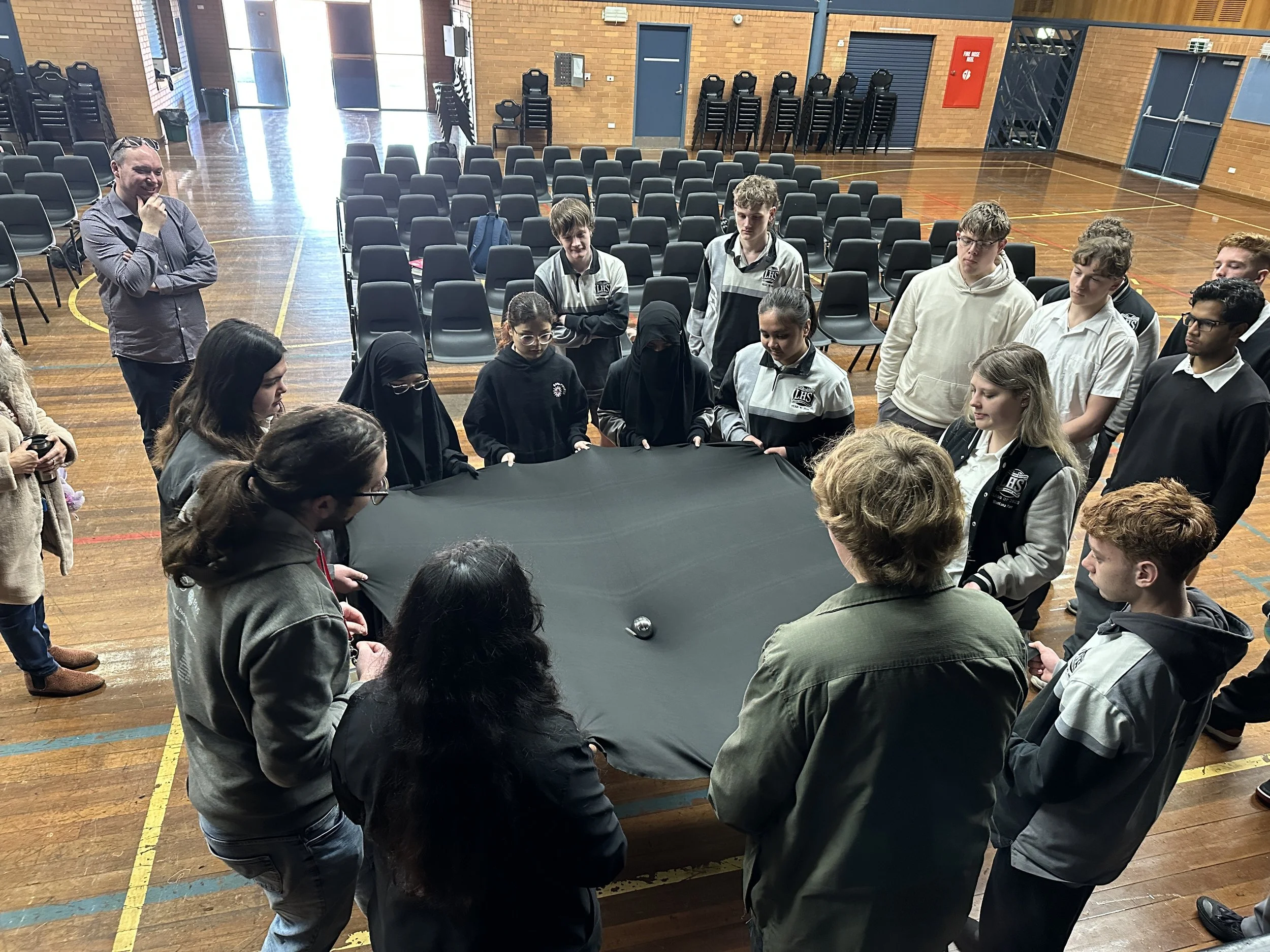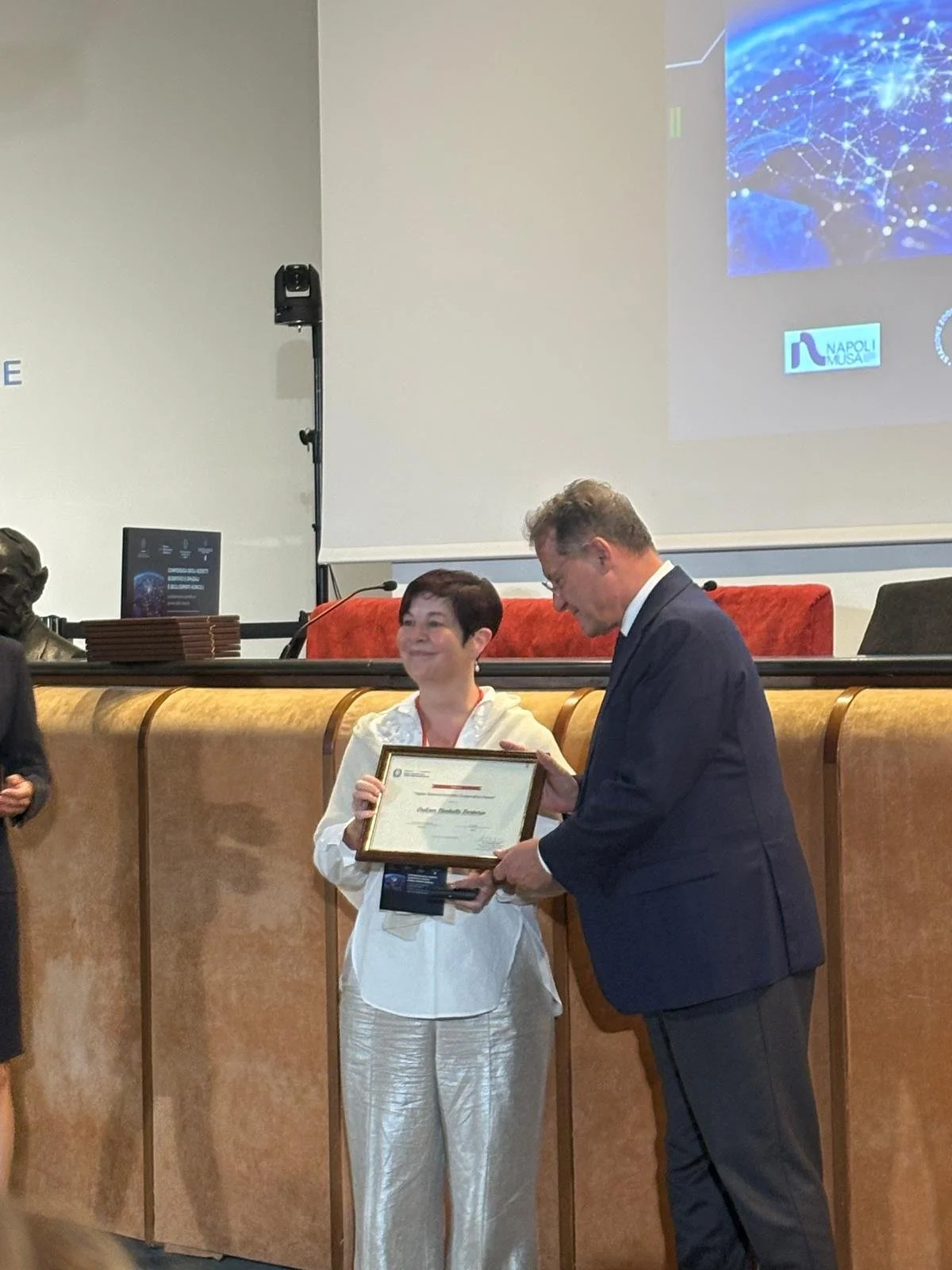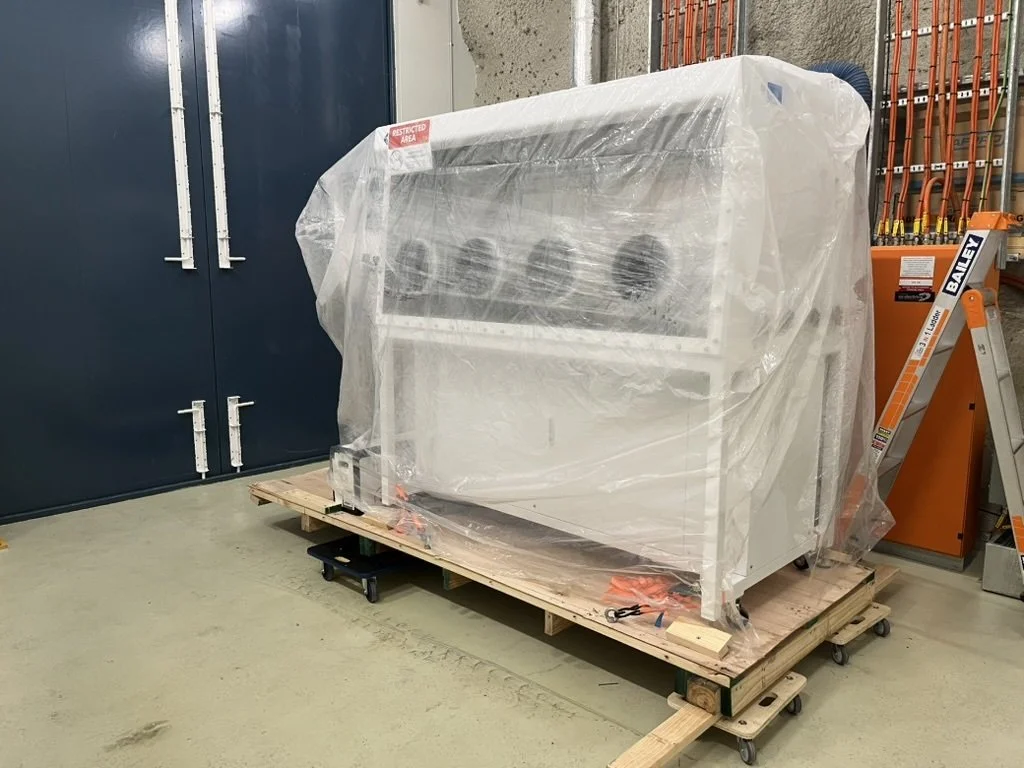In August, the National Quantum & Dark Matter Road Trip travelled to remote and regional areas across Australia to share the love of science.
Read MoreThere’s more to the universe than meets the eye. Dark matter, the invisible substance making up most of the universe’s mass, is all around us — but what it is remains one of science’s biggest mysteries.
Read MoreMembers who have made exceptional contributions to the Centre in the areas of Outreach and Impact, Collaboration and Centre Values, and Mentorship were recognised as the 2025 Annual Workshop in November.
Read MoreHappy Dark Matter Day! What better way to celebrate than hearing Dr Karl Kruszelnicki talk with Kim Mintern-Lane about the potential of dark matter research to change our lives.
Read MoreTo celebrate Dark Matter Day on Friday, October 31, we are excited to be travelling around the world, with live links to two fascinating underground labs that are part of the search for the elusive dark matter: the Stawell Underground Physics Laboratory and the Boulby Underground Laboratory.
Read MoreDark Matter Centre Director Professor Elisabetta Barberio has been awarded the Italian Bilateral Scientific Cooperation Award by the Italian Ministry of Foreign Affairs and International Cooperation.
Read MoreThe SABRE South dark matter experiment has reached an exciting milestone with the arrival of a special glovebox in the Stawell Underground Physics Laboratory.
Read MoreImagine the advantage to the mining industry of being able to ‘see’ through rock without having to excavate.
Read MoreThe National Quantum & Dark Matter Road Trip will complete its lap of Australia with an event in Sydney on Saturday.
Read MoreExcavation of the cavern where Hyper-Kamiokande will be built has been completed and the next phase of the construction has begun.
Read MoreStudents spoke to Channel 7 about why they enjoyed the visit from dark matter and quantum scientists as part of the annual National Quantum & Dark Matter Road Trip yesterday.
Read MoreNational Quantum & Dark Matter Road Trip organiser and road tripper Ben McAllister appeared on Channel 9’s Weekend Today show.
Read MoreThe National Quantum & Dark Matter Road Trip will take off from Karratha, WA, on Monday, 4 August, as it completes its lap of Australia.
Read MoreThe National Quantum & Dark Matter Road Trip is back in 2025 to complete its lap across the length and breadth of Australia.
Read MoreThe Centre’s 2024 Annual Report is now live. Read about the Centre’s significant achievements in 2024, our research and other Centre activities and get to know some of our Centre members.
Read MoreA major challenge in the hunt for dark matter is that we don’t know the mass of the dark matter particles that we are trying to detect.
Read MoreThe Centre’s 2023 Annual Report is now live. Read about the Centre’s significant achievements in 2023, our research and other Centre activities and get to know some of our Centre members.
Read MoreThe Centre’s 2022 annual report is now live. Read about the Centre’s significant achievements in 2022, our research and other Centre activities and get to know some of our Centre members.
Read MoreCYGNUS is a grouping of international researchers who have an interest in directional detection using gaseous Time Projection Chambers (TPCs).
Read MoreWISPs are similar to WIMPs in some ways – e.g. they don’t interact very much at all with regular matter – but their key distinction is that they are very light in comparison.
Read More



















